Ever wanted to defeat those fancy thermal imaging devices the military and law enforcement agencies use? Well... You can't!
Ever piece of matter in this universe above absolute zero (-459.69° F) emits radiation (in all directions) in the long-wavelength infrared band (2.5 - 25 micrometers) from its surface. This radiation is the result of the thermal agitation of the molecules which make up the matter. Basically, the hotter the mass - the more infrared energy it will emit.
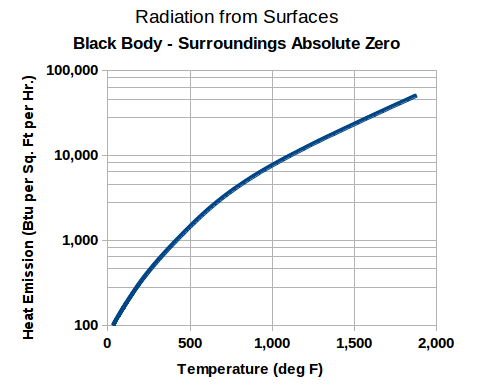
From: www.engineeringtoolbox.com
FLIR Systems, the most common manufacture of low-cost thermal imaging devices, use an uncooled Vanadium Oxide (VOx) microbolometer detector mounted behind a (germanium) filter which attenuates wavelengths below 7 µm. These VOx detectors are most sensitive to the 7 - 14 µm wavelengths. You'll want to adapt your thermal camoflage to this particular wavelength range. It should be noted that natural atmospheric absorption effects wavelengths outside of the 3 - 5 µm and 8 - 12 µm "windows."
Emissivity is the measure of a material's ability to emit energy. It's an energy ratio referenced to a "black body" at the same temperature having an emissivity of 1.00 (the unit is arbitrary). All real-world objects will have an emissivity less than 1. In general, the duller and blacker a material is, the closer its emissivity is to 1. More reflective materials have a much lower emissivity. Aluminum foil has an emissivity of around 0.05, while black enamel paint has an emissivity of around 0.80.
Objects with a high emissivity and/or objects having a higher temperature relative to their background will appear as a silhouette when viewed with a thermal imaging device. The amount of contrast is relative to the emitted thermal radiation power of the object.
Reflectivity is the fraction of radiant energy that is reflected from a surface. Shiny, polished materials will have a high reflectivity, while matte or dull materials will have a low reflectivity. The emissivity plus reflectivity of a particular material should equal 1. That's to say, the more emissive a material is, the less reflective it will be.
The main techniques in "defeating" a thermal imaging device involve using low-emissivity materials on the exterior surface of your thermal-radiating object, or somehow reducing the exterior surface temperature so there is minimum contrast against the general background. And it's easier said than done...
For example, if you're in the middle of a grass field and cover yourself with an aluminized-mylar "space blanket" (which has a low emissivity, but a high reflectivity), you'll show up as a nice "cold spot" (it's blocking your body heat, but reflecting the cooler sky) against the general higher background thermal radiation from the surrounding foliage.
Thermal conductivity and equilibrium also means an object in close proximity to the thermal radiation source will also eventually "heat up." Preventing (or at least masking) this is the key to making ideal thermal camouflage.
Common Heat Radiation Emissivity Coefficients
Human Skin 0.98
Black Electrical Tape 0.97
Masking Tape 0.92
Water 0.95
Rubber 0.95
Glass 0.92
Plywood 0.83 - 0.98
Painted Surfaces 0.84 - 0.97 (non-aluminum)
Painted Aluminum 0.45
Black Paper 0.90
White Paper 0.68
Cardboard Box 0.81
PVC 0.91 - 0.93
Gravel 0.28
Grass 0.97
Fiberglass 0.75
Aluminum (polished) 0.05 (0.77 anodized)
Brass (polished) 0.03 (0.61 oxidized)
Copper (electroplated) 0.03
Cotton 0.77
Wool 0.78
Concrete 0.85
Nylon 0.85
Snow 0.82 - 0.85
Sand 0.76 - 0.95
Asphalt 0.93
Vegetation 0.80 (varies greatly)
Dry Soil 0.92
Wet Soil 0.95
* thermoworks.com/emissivity_table.html
* engineeringtoolbox.com/emissivity-coefficients-d_447.html
* infrared-thermography.com/material-1.htm
* x20.org/library/thermal/emissivity.htm
* Table of Total Emissivity
You'll note the low-emissivity materials tend to be shiny metals, which are not ideal for optical camouflage. They are usually sandwiched between an additional matte-colored isolating material to reduce their optical glare. You're essentially trying to match the emissitivity and reflectivity of the general background to your thermal radiation.
Another example, skin has an emissivity of around 0.98. Covering it with some cotton fabric (emissivity of 0.77) would match your skin somewhat to a vegetation background of 0.80. But if the cotton fabric comes in direct contact with your skin, thermal conduction will also increase its temperature, causing it to radiate even more energy. Lining the interior of the cotton fabric with a thin metallic fabric layer would prevent your thermal radiation from heating the exterior cotton fabric.
Standard netting, or some other method of silhouette masking camouflage, should then be applied to the final outer layer. BTW, any thermal "contrast" movement will STILL be highly visible to a thermal imaging device.
I don't have access to a thermal imaging device for testing, but I do have some physics textbooks and Google. Here's some notes and observations I've come across during my research in anti-thermal techniques:
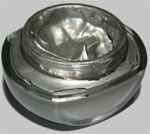

Intermat Anti-IR Thermal Skin Cream
Above is an anti-IR thermal skin cream from Intermat Defence Coatings (Greece).
It's a camouflage skin cream designed to be applied to your face, hands, or any other areas of exposed flesh, in order to attenuate your thermal radiation signature - while at the same time reflecting the surrounding background thermal radiation (to prevent contrast).
Intermat claims a person normally detected (via thermal imaging) at 1000 meters wouldn't be detected until 200 meters or so with their skin cream applied. Note that their skin cream appears to be quite shiny, so it may not be designed for daytime operations.
Intermat's skin cream formula is officially a "secret" and it's not sold to the taxpayers or voters (i.e. public), but I'm pretty sure it's just a very fine aluminum powder suspended in a jojoba oil / mango butter / beeswax consumer (non-fragrance) make-up base.
You'd probably have to experiment a bit to get the right consistency. I know absolutely nothing about homebrew make-up (or chemistry), but this seems like it would be a good starting point for your own version...
The binder material holding the aluminum powder in your homebrew anti-thermal skin cream (or paint) should NOT have a strong absorption in the thermal radiation band (7 - 14 µm) to prevent creating thermal "holes." Other low-emissive metal powders should also work, but aluminum powder tends to be the cheapest and easiest to find - and it probably won't kill you.
(intermatstealth.com)
(defensereview.com/intermat-anti-thermalir-camo-tech-for-infantry-and-special-operations-forces)
(army-technology.com/contractors/camouflage/intermat/)

Above is an example of an infantryman wearing Ghost thermal camouflage fabric from Blucher Systems (Germany).
Blucher System uses a fabric which incorporates metallized fibers and is available in various visual camouflage prints. They claim significant signature reduction in the ultraviolet (0.2 - 0.4 µm), near-infrared (0.7 - 2.5 µm), and thermal-infrared (3-5 µm / 8-12 µm) ranges.
Blucher does, however, sell a version of this fabric to the public which attenuates everything except the thermal-infrared band (i.e., it's missing the metallized fiber liner).
Note that most modern military Battle Dress Uniforms (BDUs) contain an "anti-IR" fabric, but this material is designed for attenuating the near-infrared band which most standard image intensifier night vision devices (and active infrared illunimators) operate at.
Many artificial fabric materials tend to strongly reflect radiation in the near-infrared band. Keep this in mind if you ever want to create your own "Camo Dude Detector."
Washing these BDUs with a consumer detergent containing "optical brighteners," or other detergent containing starch, will gradually weaken the anti-IR coating. Using Woolite is fine.
The above picture is also a good example of why it's so difficult to defeat infrared motion sensors which operate in the same thermal-infrared band.
Even if you completely block your thermal radiation signature, the contrast against the "warmer" background via your motion may still set off the sensor.
Most infrared motion sensors use dual infrared detectors arranged in a differential configuration. Slowly raising the overall temperature of the general target area won't set off the alarm, but any contrasting thermal radiation passing across the infrared detector will create a "difference pulse," triggering the alarm.
(eng.bluechersystems.com/produkte/C10)
(youtube.com/watch?v=nx0ggSL8CkU)
(Defense Review: Blucher Systems Ghost Soldier Camouflage)
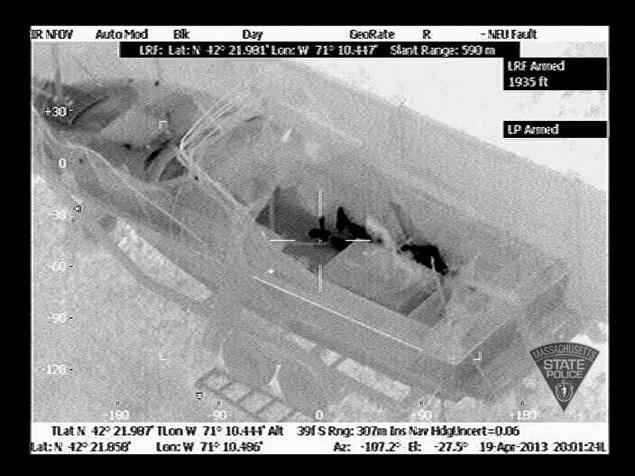
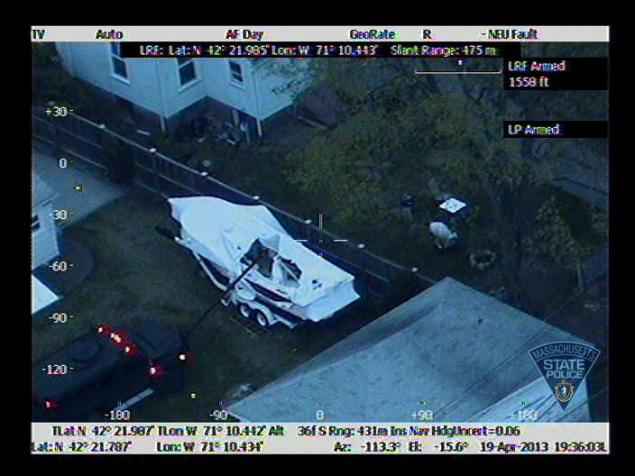
Above is a real-world thermal imaging example (left) of the April 15, 2013 Boston Marathon bombing suspect.
The Obama supporter hid in a boat which appears to have some type of protective plastic cover or tarp.
As you can see, the thin plastic cover has a high emissivity / low reflectivity, and is fairly transparent to longer wavelength thermal radiation. Hence, the thermal radiation from his body can pass right through the boat cover. That's his outline in black in the left picture.
If the boat cover had been lined with a low-emissive material, like aluminum, his thermal radiation would have been reflected internally (and dissipated) within the boat's interior and he may not have been noticed from the overhead FLIR-equipped helicopter.
Also note, in the left picture, how the boat itself contrasts against the general grass background - you can even clearly see a ladder near the trailer's tires.
Those objects are not emitting a great amount of thermal radiation, but their emissivity is different from the general background, causing them to stand out.
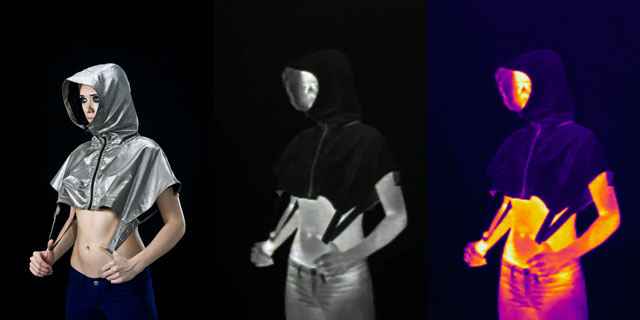
"Anti-drone hoodie" by Adam Harvey.
While more of an art project than a piece of tactical gear, his overall concept is quite sound.
A metallic fabric is combined with a silk liner to produce a "flowing" anti-thermal fabric. The silk liner also helps a little to isolate the hoodie from your body to reduce thermal conduction.
Note how the person wearing the hoodie appears as a "thermal hole" in the above picture. This would need to be combined with some other type of visual camouflage to breakup the distinct outline of a human.
A person wearing this anti-thermal hoodie within a group of people not wearing similar hoodies would stand out just the same as if they were in the middle of a field. This emphasises the need to monitoring your thermal contrast when trying to avoid a thermal detection device.
I'm pretty sure the metallic fabric is similar to that which was used in the anti-TASER experiments in GBPPR 'Zine, Issue #42.
The fabric can be purchased from LessEMF, though it's still quite expensive, around $20 per linear foot.
(ahprojects.com/projects/stealth-wear)
(Stealth Wear: 'Anti-Drone' Hoodie Thermal Test Footage)
(www.lessemf.com)
(The Anti-Drone Hoodie That Helps You Beat Big Brother's Spy in the Sky)
(Anti-Drone Camouflage: What to Wear in Total Surveillance)
(Adam Harvey Launches Stealth Wear, an Anti-Drone Clothing Line)
(Stealth Wear: New Counter-Surveillance Clothing Makes You Invisible to Drones)
(Anti-Drone Clothing [YouTube])
(Anti-Drone Surveillance Clothing Revealed [YouTube])
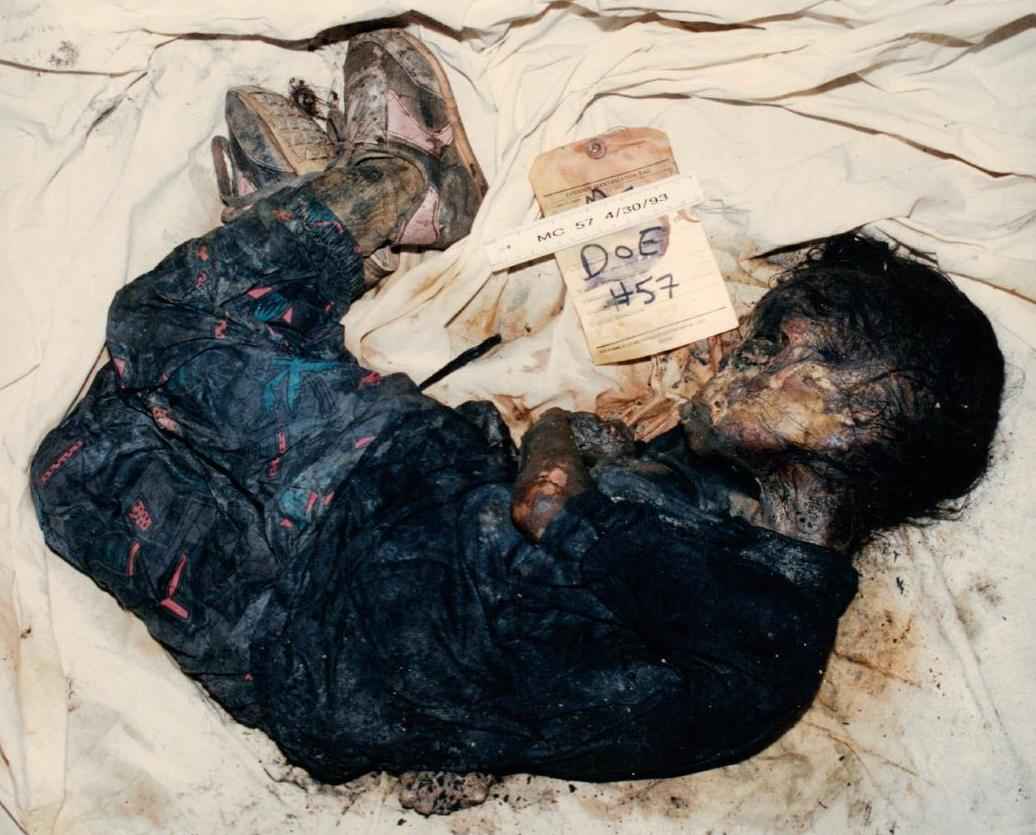

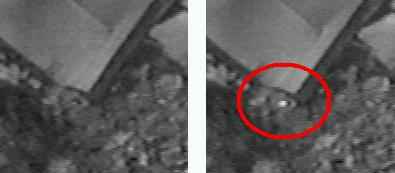
Knowing what you know now, review the overhead FLIR video footage from the 1993 Waco compound massacre.
You'll notice a number of thermal "flashes" coming from the bushes, and other concealed areas, surrounding the compound after it was set on fire. (The tear gas used a flammable propellant.)
Remember, thermal imaging devices contain a high-pass filter which severely attenuates the normal visible light spectrum. Those "flashes" had to contain energy in the thermal-infrared band.
The flashes are most likely gunshots from FBI snipers shooting at innocent people trying to flee a building the government just set on fire.
The official U.S. government report on the Waco massacre says there wasn't any sniper fire...
Check out The FLIR Project by Michael McNulty for more information on the Waco coverup.
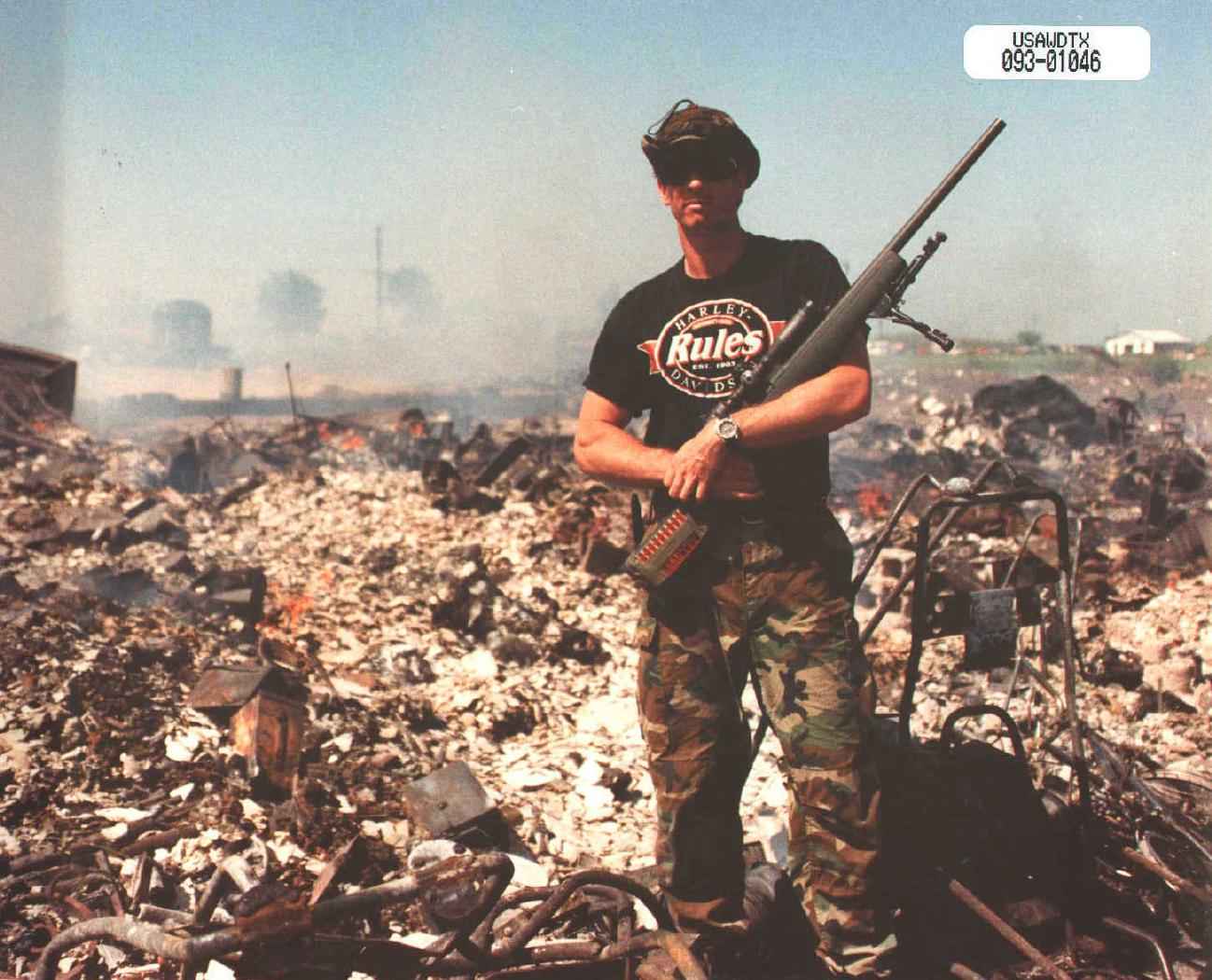
A sniper who officially didn't exist.
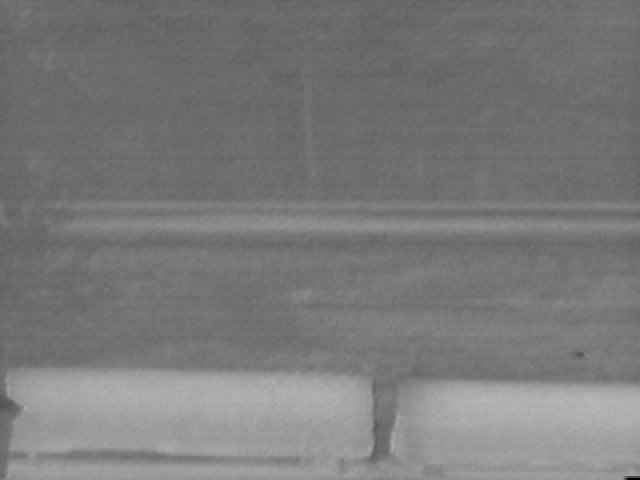
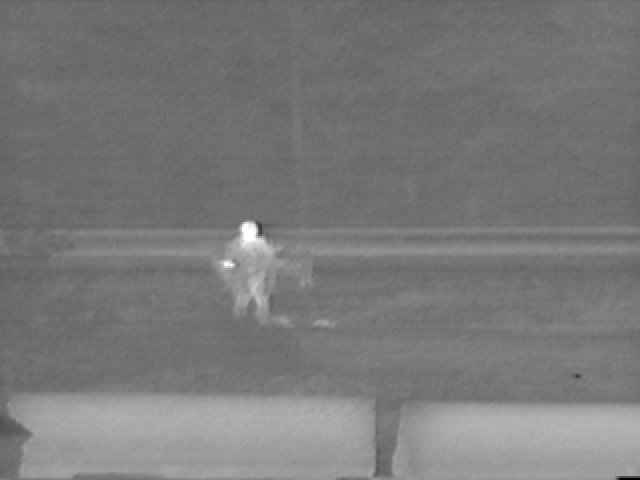
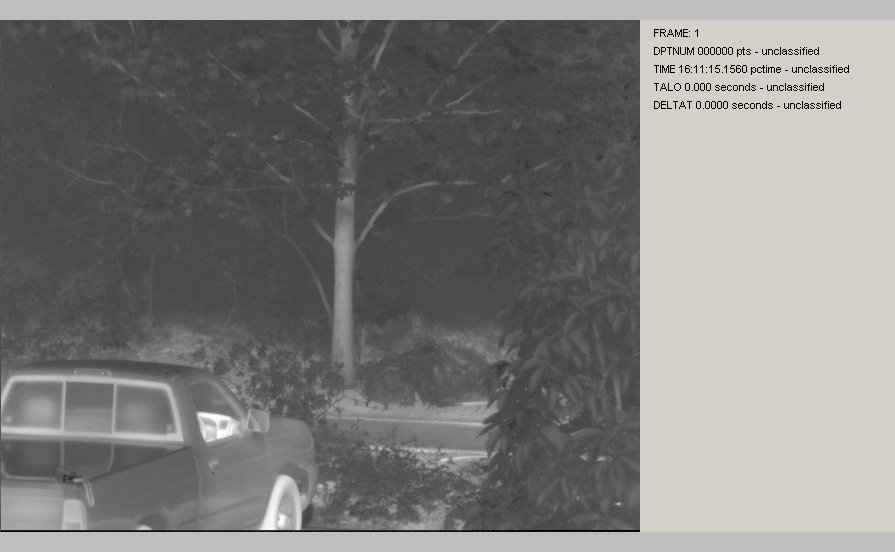
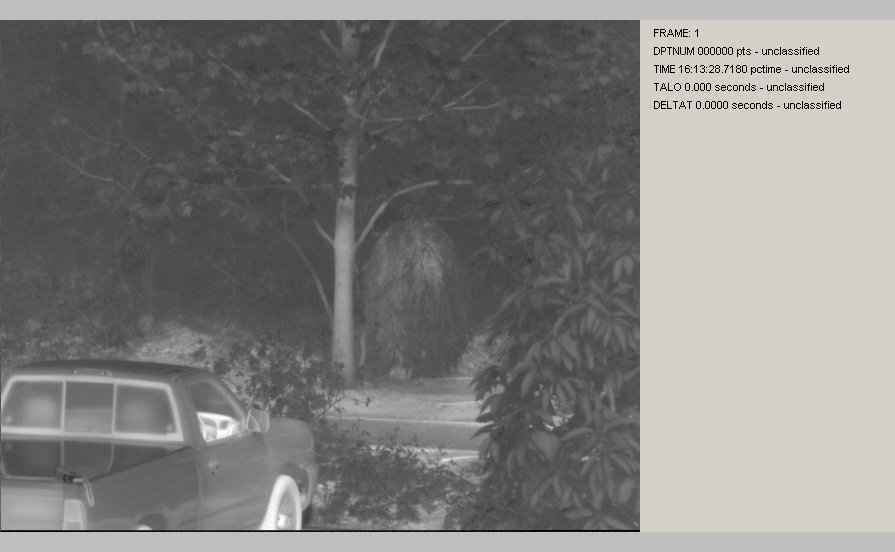
Example thermal imaging pictures of a man wearing a Custom Concealment, Inc. Thermal Ghillie Suit.
Their anti-thermal ghillie suits are not available to the public, but it's most likely just a regular ghillie suit with an internal liner of metallic fabric and another wool/cotton/silk/etc. insulating layer to keep it away from your body.
(www.ghillie.com/thermal.htm)














